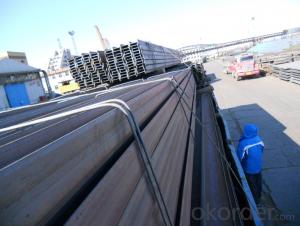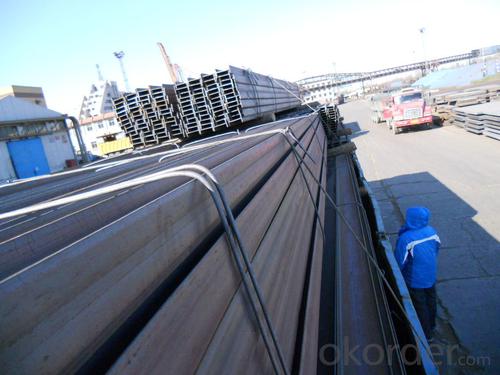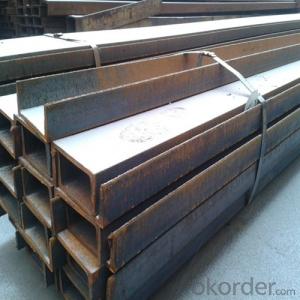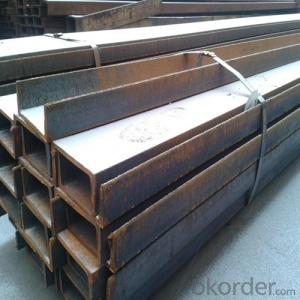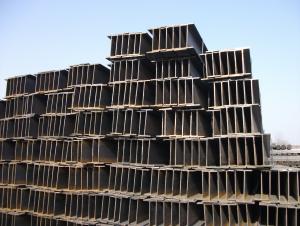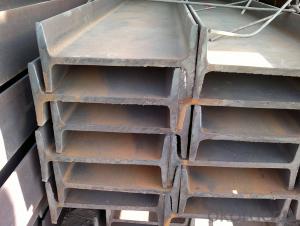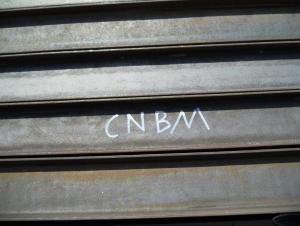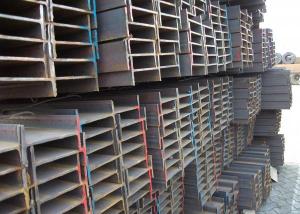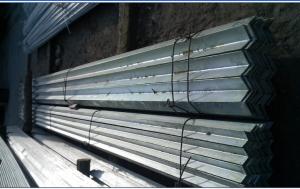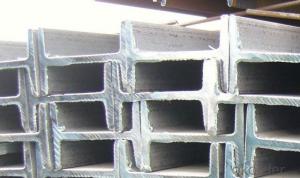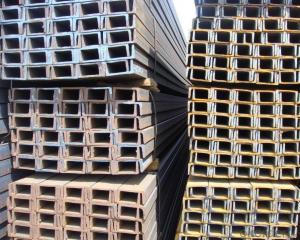I BEAM
- Loading Port:
- China Main Port
- Payment Terms:
- TT OR LC
- Min Order Qty:
- -
- Supply Capability:
- -
OKorder Service Pledge
OKorder Financial Service
You Might Also Like
Specifications of IPE/IPEAA Beam Steel
1. Product name: IPE/IPEAA Beam Steel
2. Standard: EN10025, GB Standard, ASTM, JIS etc.
3. Grade: Q235B, A36, S235JR, Q345, SS400 or other equivalent.
4. Length: 5.8M, 6M, 9M, 10M, 12M or as your requirements
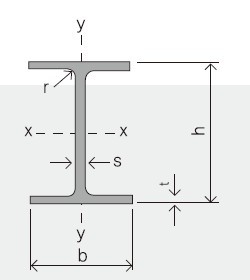
Section | Standard Sectional Dimensions(mm) | ||||
| h | b | s | t | Mass Kg/m |
IPE80 | 80 | 46 | 3.80 | 5.20 | 6.00 |
IPE100 | 100 | 55 | 4.10 | 5.70 | 8.10 |
IPE120 | 120 | 64 | 4.80 | 6.30 | 10.40 |
IPE140 | 140 | 73 | 4.70 | 6.90 | 12.90 |
IPE160 | 160 | 82 | 5.00 | 7.40 | 15.80 |
IPE180 | 180 | 91 | 5.30 | 8.00 | 18.80 |
IPE200 | 200 | 100 | 5.60 | 8.50 | 22.40 |
IPE220 | 220 | 110 | 5.90 | 9.20 | 26.20 |
IPE240 | 240 | 120 | 6.20 | 9.80 | 30.70 |
IPE270 | 270 | 135 | 6.60 | 10.20 | 36.10 |
IPEAA80 | 80 | 46 | 3.20 | 4.20 | 4.95 |
IPEAA100 | 100 | 55 | 3.60 | 4.50 | 6.72 |
IPEAA120 | 120 | 64 | 3.80 | 4.80 | 8.36 |
IPEAA140 | 140 | 73 | 3.80 | 5.20 | 10.05 |
IPEAA160 | 160 | 82 | 4.00 | 5.60 | 12.31 |
IPEAA180 | 180 | 91 | 4.30 | 6.50 | 15.40 |
IPEAA200 | 200 | 100 | 4.50 | 6.70 | 17.95 |
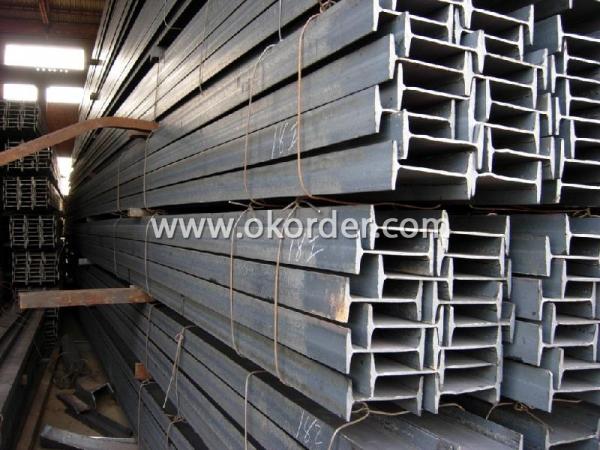
Applications of IPE/IPEAA Beam Steel
IPE/IPEAA Beam Steel are widely used in various construction structures, bridges, autos, brackets, mechanisms and so on.
Packing & Delivery Terms of IPE/IPEAA Beam Steel
1. Package: All the IPE/IPEAA Beam Steel will be tired by wire rod in bundles
2. Bundle weight: not more than 3.5MT for bulk vessel; less than 3 MT for container load
3. Marks:
Color marking: There will be color marking on both end of the bundle for the cargo delivered by bulk vessel. That makes it easily to distinguish at the destination port.
Tag mark: there will be tag mark tied up on the bundles. The information usually including supplier logo and name, product name, made in China, shipping marks and other information request by the customer.
If loading by container the marking is not needed, but we will prepare it as customer request.
4. Shipment: In containers or in bulk cargo
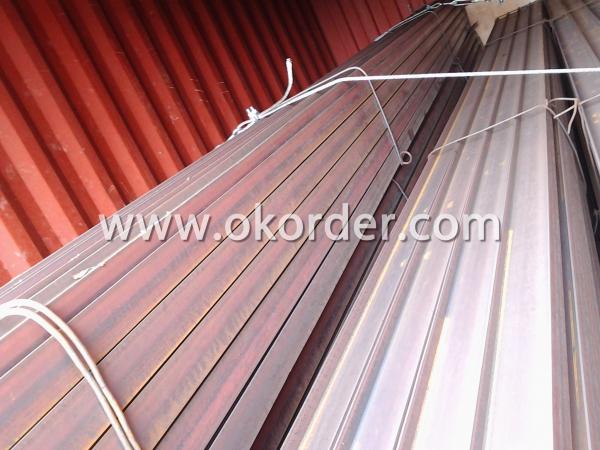
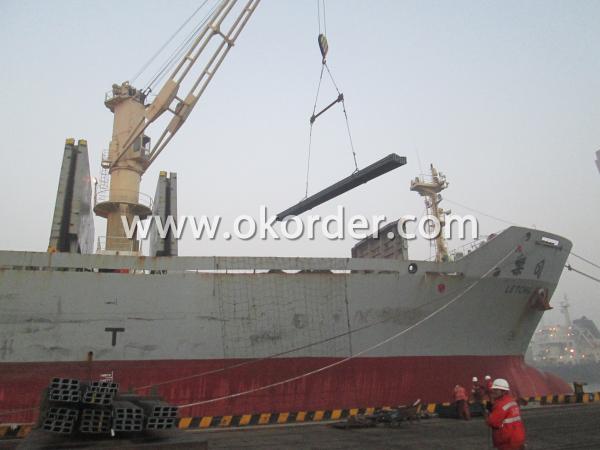
5. Delivery time: All the IPE/IPEAA Beam Steel will be at the port of the shipment within 45 days after receiving the L/C at sight ot the advance pyment.
6. Payment: L/C at sight; 30% advance payment before production, 70% before shipment by T/T, etc.
Production flow of IPE/IPEAA Beams
Material prepare (billet) —heat up—rough rolling—precision rolling—cooling—packing—storage and transportation
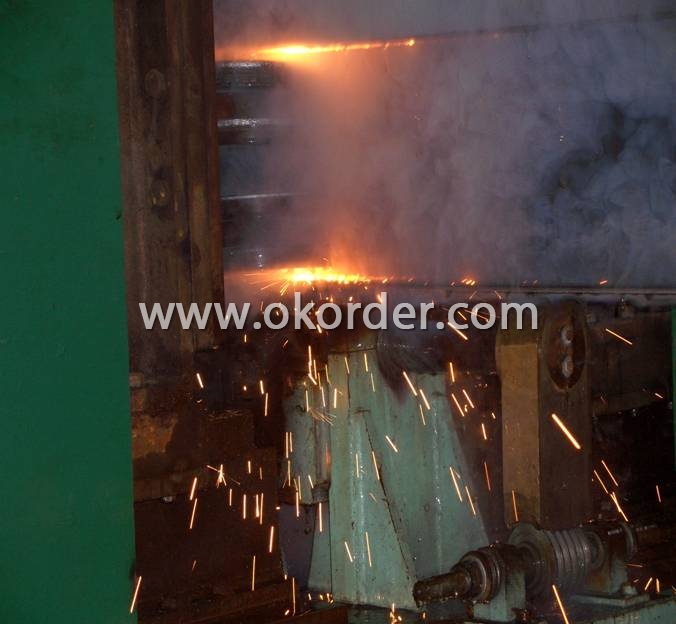
- Q: Can steel I-beams be used in railway infrastructure?
- Certainly, railway infrastructure can make use of steel I-beams. These I-beams are frequently employed in the fabrication of railway bridges and support structures because of their impressive strength-to-weight ratio and durability. Their exceptional load-bearing capacity renders them capable of sustaining the weight of trains and other hefty railway equipment. Furthermore, steel I-beams possess the added advantage of being able to span great distances, rendering them ideal for railway applications necessitating wide spans. Moreover, steel is a versatile material that can be effortlessly fabricated and welded, making it a pragmatic selection for railway infrastructure projects.
- Q: What are the different surface finishes available for steel I-beams?
- Steel I-beams can be finished in various ways to serve different purposes and provide distinct advantages. The most prevalent surface finishes for steel I-beams are as follows: 1. Mill Finish: This is the simplest and most common surface finish for steel I-beams. It refers to the untreated surface of the steel beam as it comes straight from the mill. Mill finish is typically characterized by a dull gray appearance and may have minor imperfections or blemishes. It is suitable for applications where neither aesthetics nor corrosion resistance are major concerns. 2. Hot-dip galvanized: To achieve this finish, the steel beam is immersed in a molten zinc bath, forming a protective coating on its surface. Hot-dip galvanizing provides excellent corrosion resistance, as the zinc coating acts as a barrier against moisture and other corrosive elements. Steel I-beams with hot-dip galvanized finishes are commonly employed in outdoor applications or environments where exposure to harsh weather or corrosive substances is expected. 3. Painted: Steel I-beams can also be coated with paint to offer protection against corrosion and enhance their appearance. The paint acts as a protective layer, and painted finishes provide a wide range of color options that can be customized to match specific aesthetic requirements. This finish is often used in architectural and decorative applications where appearance is important. 4. Powder-coated: Powder coating is a dry finishing process in which a powdered coating material is electrostatically applied to the steel beam and then cured under heat. This process results in a durable, smooth, and uniform finish that offers excellent corrosion resistance. Powder-coated steel I-beams are frequently utilized in both indoor and outdoor applications that demand both durability and aesthetics. This finish can also be customized in terms of color and texture. 5. Black oxide: Black oxide is a chemical conversion coating that forms a thin, black oxide layer on the surface of the steel beam. This finish provides mild corrosion resistance while enhancing the beam's appearance with a dark, black color. Black oxide finishes are commonly used in applications where a sleek and uniform appearance is desired, such as architectural or decorative elements. In conclusion, steel I-beams can be finished with mill finish, hot-dip galvanized, painted, powder-coated, or black oxide surfaces. Each finish offers unique advantages in terms of corrosion resistance, aesthetics, and suitability for specific applications. The choice of surface finish depends on factors such as the intended use, environmental conditions, and desired appearance.
- Q: Channel and I-beam are commonly used in construction sites. It is better to have on-site construction drawings, thank you
- Channel and I-beam are usually used to build floors.
- Q: Can Steel I-Beams be used for educational institutions like schools or universities?
- Yes, steel I-beams can be used for educational institutions like schools or universities. Steel I-beams are commonly used in construction due to their strength, durability, and versatility. They provide excellent structural support, making them suitable for constructing large and open spaces such as classrooms, auditoriums, gymnasiums, and libraries. Steel I-beams can withstand heavy loads and provide stability, ensuring the safety of the building and its occupants. Additionally, steel is a sustainable material, with a high recycling rate, making it an environmentally friendly choice for educational institutions concerned about sustainability. Overall, steel I-beams are a reliable and practical option for constructing educational buildings.
- Q: Can steel I-beams be used for skylights or atriums?
- Steel I-beams are not commonly used for skylights or atriums as they lack the necessary transparency or translucency needed to allow natural light to pass through. Instead, materials such as glass, acrylic, or polycarbonate are typically utilized in the construction of skylights and atriums. These materials are designed to both transmit light and maintain structural integrity, ensuring maximum natural light enters the space while also providing the required strength and durability.
- Q: How do you calculate the weight of a steel I-beam?
- In order to determine the weight of a steel I-beam, one must take into account its dimensions and the density of steel. The weight can be calculated by multiplying the volume of the I-beam by the density of the steel. To begin, the dimensions of the I-beam must be measured, including the length, width, and height. The width pertains to the flange width, while the height represents the overall height of the beam. Additionally, the thickness of the flanges and the web thickness should be measured. Subsequently, the cross-sectional area of the I-beam can be calculated by multiplying the flange width by the web thickness. By subtracting the area of the two flanges from the total area, the area of the web can be obtained. Following that, the volume of the I-beam can be determined by multiplying the area of the web by the overall length of the beam. Lastly, the weight of the steel I-beam can be obtained by multiplying the volume by the density of steel, which is usually around 7850 kilograms per cubic meter.
- Q: H steel and I-beam, which bearing good?
- If load-bearing, H steel is better.
- Q: How do steel I-beams contribute to the overall durability of a structure?
- Steel I-beams contribute to the overall durability of a structure by providing strength and support. Due to their shape, I-beams are able to distribute weight evenly, reducing the risk of structural failures. Their high strength-to-weight ratio allows for the construction of larger, more open spaces without compromising on stability. Moreover, steel I-beams are resistant to bending, warping, and corrosion, ensuring the longevity and structural integrity of the building.
- Q: How do steel I-beams handle dynamic loads?
- Steel I-beams are designed to handle dynamic loads with great efficiency and strength. The shape of an I-beam allows it to distribute the load evenly along the length of the beam, making it highly resistant to bending and deformation under dynamic loads. This is due to the I-beam's ability to resist both compression and tension forces. When a dynamic load is applied to an I-beam, the top and bottom flanges of the beam carry the majority of the load, while the web in between provides additional support. The vertical flanges help resist bending, while the horizontal web resists shear forces. This structural configuration ensures that the load is spread out and evenly distributed, preventing concentrated stress points that could lead to failure. Furthermore, the use of steel as the primary material for I-beams provides additional benefits in handling dynamic loads. Steel is known for its high strength-to-weight ratio and excellent fatigue resistance, making it an ideal material for structures subjected to dynamic loads. Steel I-beams can endure repeated loading and unloading cycles without experiencing significant fatigue or deformation, ensuring their long-term structural integrity. Additionally, steel I-beams can be further reinforced and optimized for specific dynamic load conditions by altering their size, shape, and material properties. This allows engineers to tailor I-beams to meet the specific requirements of different dynamic load scenarios, such as heavy machinery, moving vehicles, or seismic activities. In summary, steel I-beams are well-suited for handling dynamic loads due to their efficient distribution of forces, resistance to bending and deformation, and inherent strength and fatigue resistance. Their ability to withstand repeated loading and unloading cycles makes them a reliable choice for a wide range of applications where dynamic loads are present.
- Q: What are the advantages of using steel I-beams?
- There are several advantages of using steel I-beams. Firstly, they have a high strength-to-weight ratio, which means they can support heavy loads while being relatively lightweight. Secondly, steel I-beams are highly durable and resistant to warping or bending, ensuring long-term structural stability. Additionally, they are versatile and can be easily customized to fit specific construction requirements. Moreover, steel I-beams are fire-resistant, making them a safer choice in case of fire hazards. Lastly, steel is a sustainable material as it can be recycled, reducing environmental impact.
Send your message to us
I BEAM
- Loading Port:
- China Main Port
- Payment Terms:
- TT OR LC
- Min Order Qty:
- -
- Supply Capability:
- -
OKorder Service Pledge
OKorder Financial Service
Similar products
Hot products
Hot Searches
Related keywords
